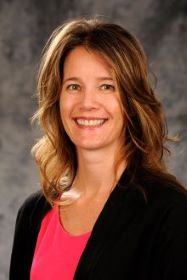Director's Letter

As many of you know, Bill Suk retired from NIEHS at the end of 2022, having expertly guided the Superfund Research Program (SRP) for 35 years. As we reflect on his leadership and vision for the program with immense gratitude, I want to assure you that during this time of transition, SRP will continue to operate, and our strong staff will continue to support your research endeavors, as usual. I will be serving as Acting Chief of the Hazardous Substances Research Branch and Director of the SRP while NIEHS searches for a permanent replacement over the next year.
My tenure with NIEHS began in 2007, with research training focused on DNA repair and telomere biology. Within SRP, I support multi-project grants that span biomedical science and environmental science and engineering. I am also the lead for SRP's data science and sharing initiatives, where I strive to foster activities that focus on increasing the findability, accessibility, interoperability, and reusability of SRP-generated data. Our goal for these efforts is to enable researchers to answer more complex research questions and to translate data into knowledge and action.
The key mission of SRP has always been to provide solutions to protect health, the environment, and communities. Central to this mission is getting science and solutions into the hands of people who can use it. SRP grantees collaborate with state agencies, local governments, nonprofits, small businesses, and communities affected by hazardous substances to accelerate the application of their research.
One aspect of this work is technology transfer: moving research from the lab to field studies, validating results, and facilitating the adoption and use of these innovative approaches. SRP-funded scientists from multi-project centers, small businesses, and individual research projects develop innovative strategies to make detecting, monitoring, and cleaning up contaminants more efficient, sustainable, and cost effective than existing methods. They also design novel therapies to protect human health.
These basic biomedical and engineering research advances from the SRP have resulted in significant cost savings and public health benefits over the years. This edition's feature highlights a few of the many prominent examples of technology transfer successes, including commercial products and small business spin-offs.
We are always excited to learn about our grantees' technology transfer activities. Please let us know of any notable advancements using the SRP Data Collection Tool .
Kind regards,
Michelle Heacock, Ph.D.
Acting Director
Superfund Research Program
to Top



